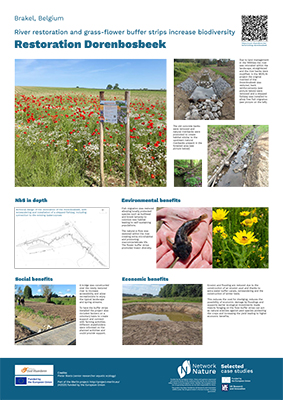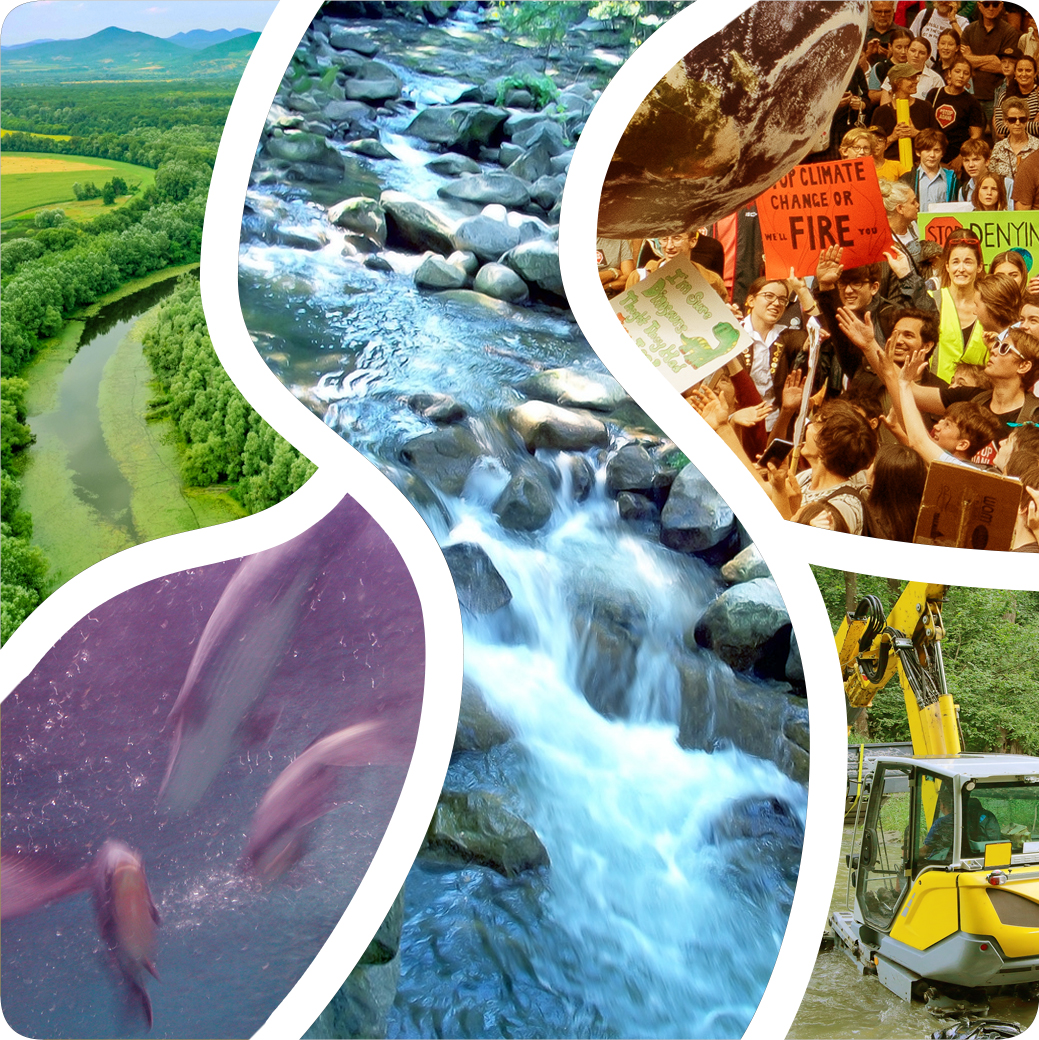Pieter Boets
Senior researcher aquatic ecology
Provincial Centre of Environmental Research, Ghent
EC / PolicyMakers / Funders / Government

My Projects
 Project MERLIN - Restoration project dealing with free fish migration, freshwater restoration and installation of buffer strips to reduce run-off and erosion.
Project MERLIN - Restoration project dealing with free fish migration, freshwater restoration and installation of buffer strips to reduce run-off and erosion.
- What impact did these projects have on biodiversity, if any?
Increased fish biodiversity and also increase in macroinvertebrates and insect biodiversity
- What work challenges did you face and what approach did you take to solve them?
Working in protected areas and working on a voluntary basis with farmers – planning is crucial but also good communication.
- What lessons learned are transferable to other places/projects?
Provide sufficient personnel to have a good follow-up of the administrative and technical issues related to the project. Weather conditions are unpredictable and you should take into account some extra time to implement all measures.
- What is your biggest barrier and what are you trying to do about it?
Accessibility of the area – developing a good plan and making good agreements with the contractor helped a lot.
My Focus and Approach
- Lessons Learnt - Some recommendations for others?
- What’s most important:
Plan well ahead and foresee the necessary people to support the project.
- Do this, not that:
Provide sufficient communication and include stakeholders.
- Always start by:
Analyzing the problem/ecosystem.
- What to do when things get difficult…:
Try to get help from colleagues and other experts in the field.
- 5 simple steps to:
- Investigate the site/ecosystem
- Make up a good planning
- Provide the necessary permits
- Include pre- and post-monitoring
- Find a good contractor
- The biggest barrier and what I am trying to do about it:
Try to get help from colleagues and other experts in the field.
- What’s most important:
My Journey
- My journey:
Started studying biology and did a PhD on alien aquatic invasive species. Started working at the Province as aquatic ecologist advising policy and management of watercourses in East Flanders.
- My Education:
-
Biologist – aquatic ecologist
-
- The Big Change:
More attention to nature restoration and the importance of free fish migration in combination with the targets as set by the EU WFD.
- Favourite part of the work I do:
Combination of fieldwork and data analyses – applied science.
Interview
Key Topics:
Key Topics
These relate to specific topics (e.g. technical solutions; restoration activities etc.) addressed within the showcase materials.
- Fishway
- Bufferstrips
- Remeandering
Prone2Success Factors Demonstrated:
Prone2Success Factors Demonstrated
These are the Prone2Success checklist factors which are highlighted within this showcase. More information on the Prone2Success checklist can be found here.
- Measurable goals to improve ecological status
- Supports WFD, NRL and other restoration policy goals
- Communicate/engage with stakeholders from the outset
- Engage with the local community from the outset
- Obtain sufficient finance for all project stages
- Local planning processes are transparent / clearly understood
- Include adaptive management approaches (combined with monitoring)
- Ensure stakeholder understanding / education of restoration goals & benefits
- Demonstrate specific ecological improvements/legal compliance / communicating results during and after the project
- Take climate change into account
NRL Restoration Categories:
NRL Restoration Categories
These are the restoration categories (listed under Annex VII of the European Nature Restoration Law (NRL) which are relevant to this showcase.
- [2] Improve hydrological conditions
- [5] Re-establish river meandering
- [6] Remove obsolete barriers
- [7] Re-naturalise river beds
- [12] Assist migration of provenances and species
- [19] Stop or reduce the use of chemical pesticides / fertilisers
- [22] Improve connectivity across habitats
- [26] Restore fish spawning / nursery areas
Was this information useful?
No
Thank you for submitting feedback.
Click here to share your thoughts
Resources
Articles
- https://www.nature.com/articles/s41586-023-06400-1
- https://www.sciencedirect.com/science/article/abs/pii/S0048969710005462
- important to keep working on this, motivation for doing better!
Videos
MERLIN Upper Scheldt catchment case study
Presentations
 River restoration and grass-flower buffer strips increase biodiversity
River restoration and grass-flower buffer strips increase biodiversity
Restoration Dorenbosbeek, Belgium
 MERLIN Fact sheet #16 - Scheldt catchment, small streams and basins
MERLIN Fact sheet #16 - Scheldt catchment, small streams and basins
Acknowledgements & Links
This material was provided by: MERLIN project.
Funding provided by the H2020 programme.


